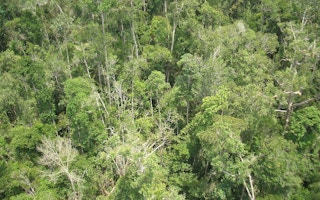An award-winning method for mapping Indonesia’s vast peatlands, developed by Dutch, German and Indonesian scientists, will help the Southeast Asian nation tackle annual fires that harm health in the region, the organisers of the prize said on Friday.
The International Peat Mapping Team (IPMT) will receive $1 million for winning the two-year competition, funded by the David and Lucile Packard Foundation and managed by the U.S.-based World Resources Institute (WRI).
“To be able to manage peat well, we needed to have a map, and the map we had before was not that comprehensive,” said Nirarta Samadhi, director of WRI Indonesia.
Indonesian government agencies, which helped organise the competition, will start using the new methodology as soon as possible, said Supiandi Sabiham, co-chair of the judges.
The IPMT’s approach, which combines satellite imagery, LiDAR technologies and on-the-ground measurement, won for its accuracy, speed and affordability, added Sabiham.
Peat soils contain huge quantities of carbon in the form of organic matter, which accumulates over thousands of years and provides nutrients for plant growth.
“
To be able to manage peat well, we needed to have a map, and the map we had before was not that comprehensive.
Nirarta Samadhi, director, WRI Indonesia
Rainforests across Indonesia’s sprawling archipelago contain more than 15 million hectares of peatland - an area twice the size of Ireland - mostly on the islands of Sumatra and Borneo and in the easternmost province of Papua.
When peatlands are drained or cleared by fire, often to make way for oil palm plantations or farming, the carbon is released into the atmosphere where it traps heat, contributing to climate change.
Peaty soil is particularly flammable when dry, often causing fires to spread beyond their intended areas.
Each year smoke from fires used to clear land for agricultural expansion in Indonesia clouds the skies over large parts of Southeast Asia, raising concerns about public health.
Peat fires in 2015 were estimated to have caused up to 100,000 premature deaths, according to the WRI, and cost the Indonesian economy $16.5 billion, or nearly 2 percent of gross domestic product.
Indonesian President Joko Widodo set up an agency in 2016 to restore about 2 million hectares of damaged peatland, and imposed a moratorium on new concessions for oil palm.
The IPMT methodology will enable the Indonesian authorities to better manage peatlands, and help them create canals and wetting systems to protect peat in the dry season, WRI’s Samadhi told the Thomson Reuters Foundation.
Open to students, engineers, consultants, scientists, companies and universities, the competition attracted 44 applicants from 10 countries.
Bambang Setiadi, a scientist in the IPMT team, said the prize money would be used to fund further research into peatlands, as well as scholarships for Indonesian students to attend German universities.
This story was published with permission from Thomson Reuters Foundation, the charitable arm of Thomson Reuters, that covers humanitarian news, women’s rights, trafficking, property rights, climate change and resilience. Visit http://news.trust.org)








